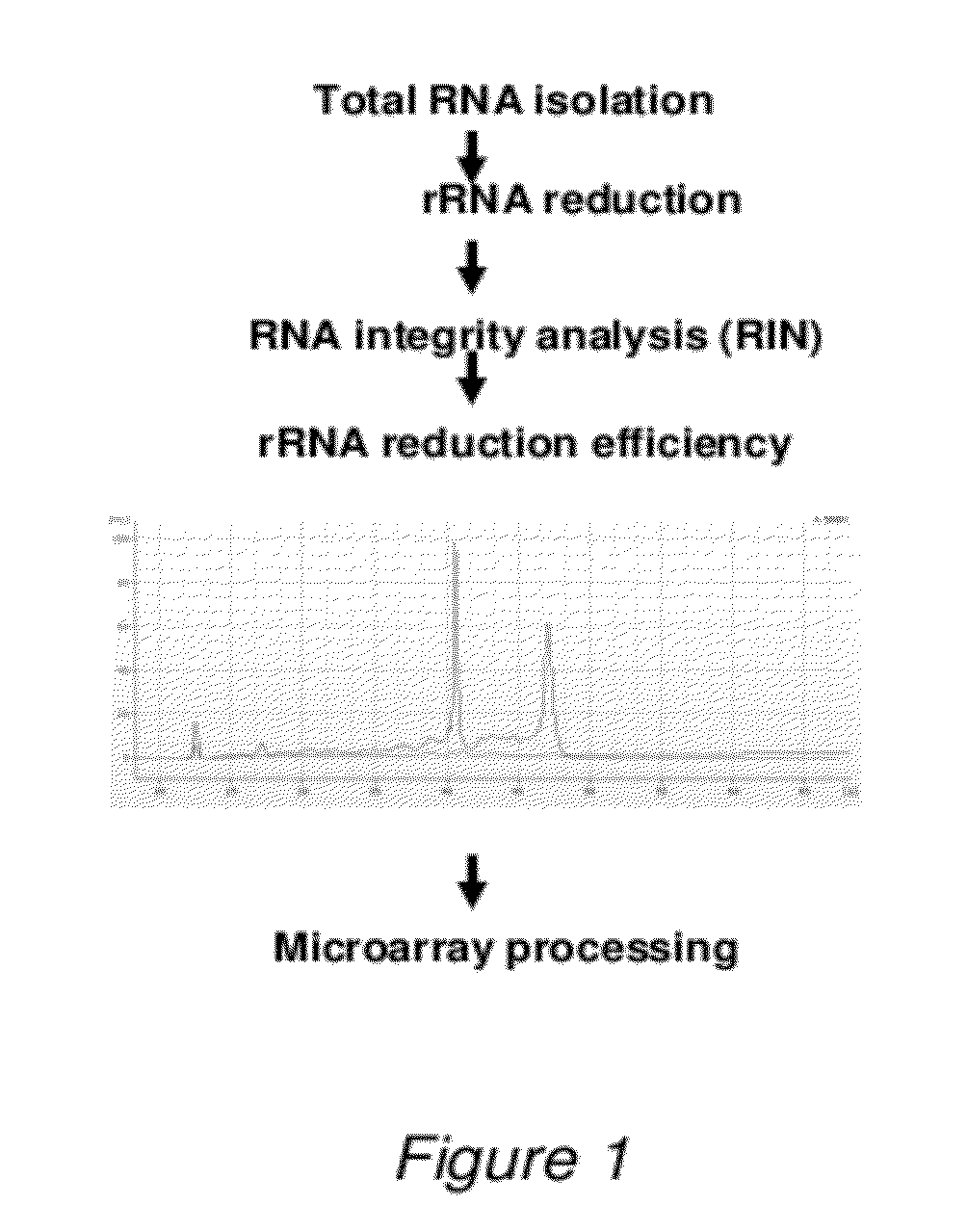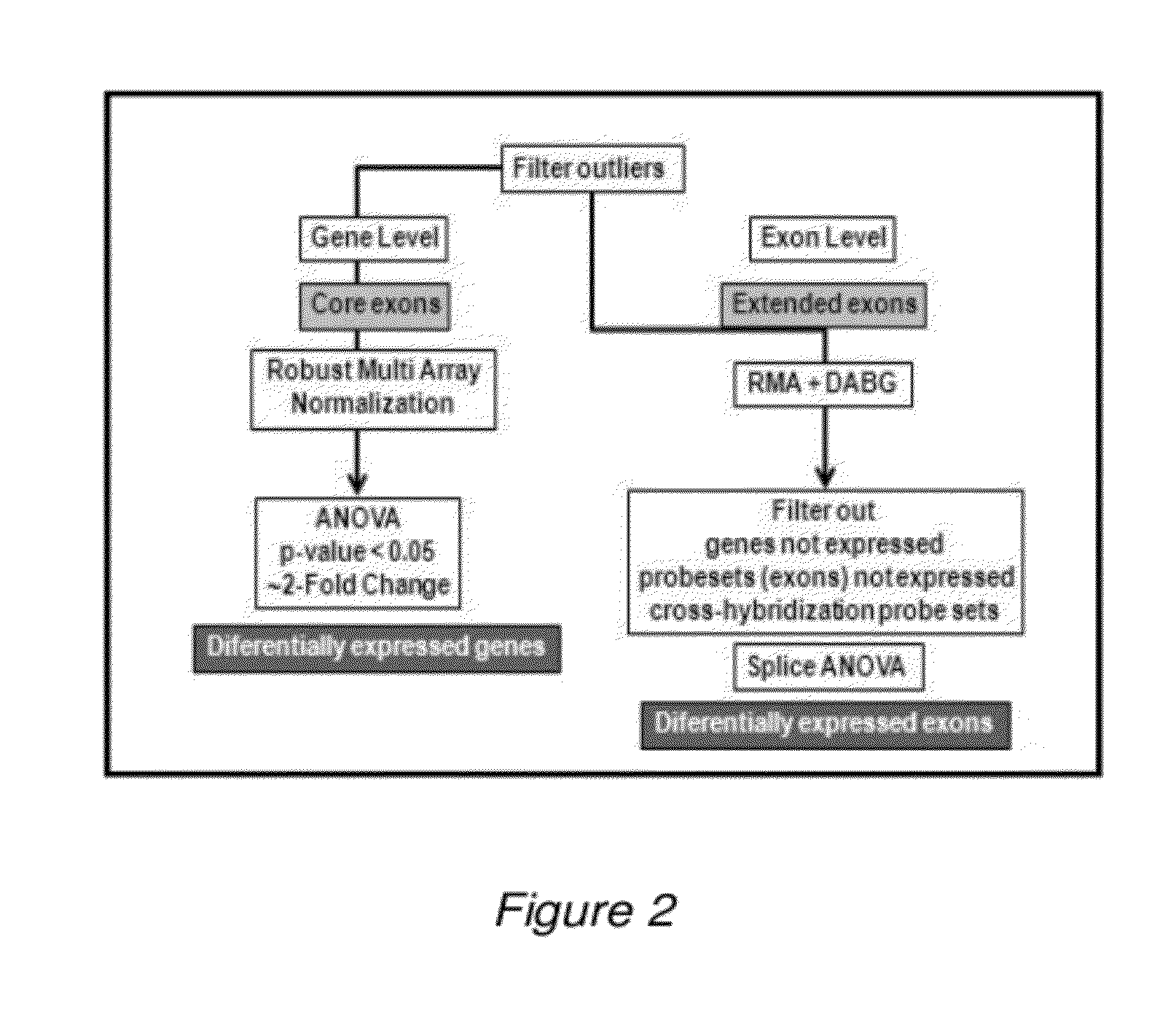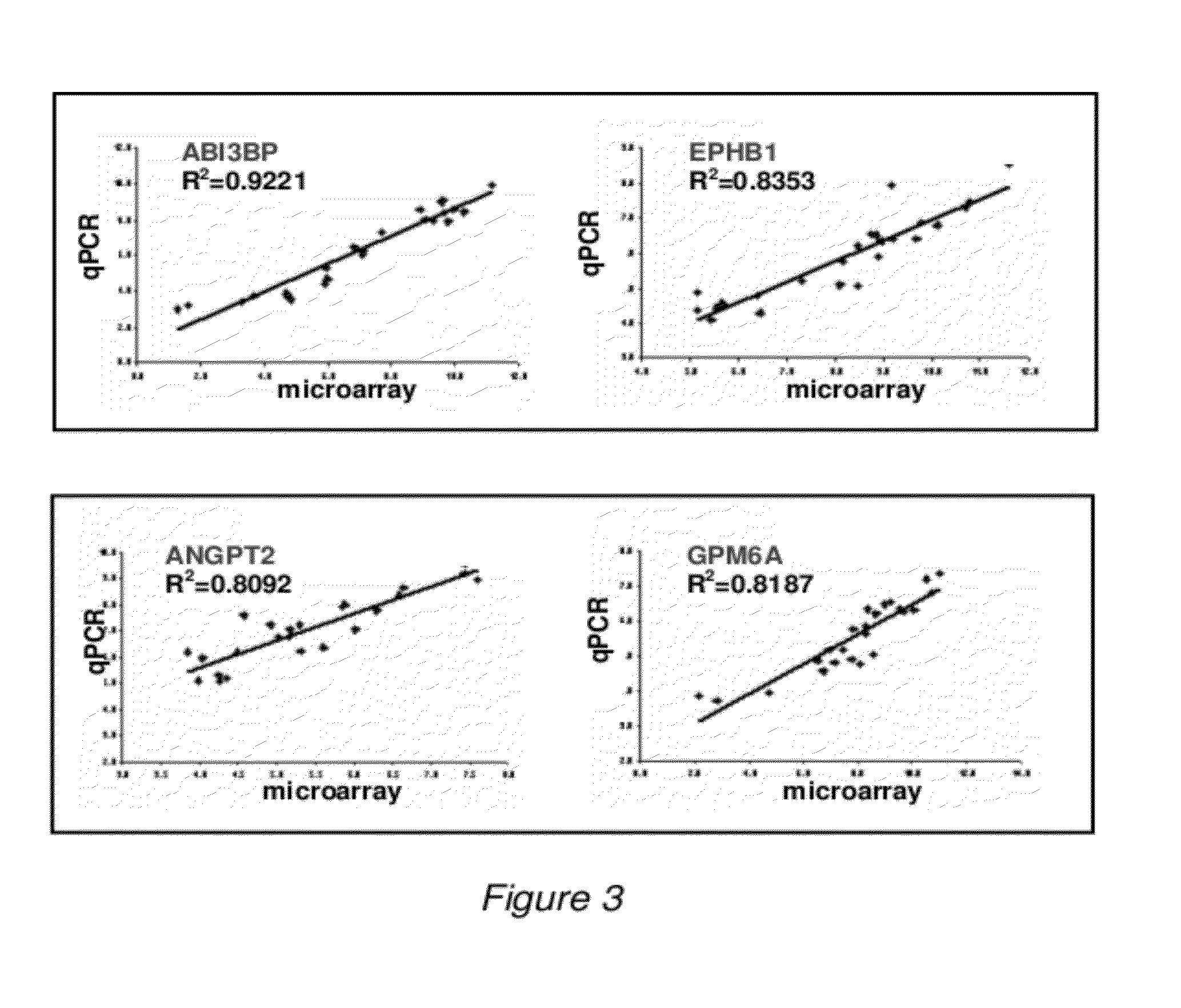Methods for diagnosing follicular thyroid cancer
- Summary
- Abstract
- Description
- Claims
- Application Information
AI Technical Summary
Benefits of technology
Problems solved by technology
Method used
Image
Examples
example 1
Identification of a Four-Gene Signature as Cancer (Malignant Vs Non-Malignant) Predictor
[0115]Gene-Level Analysis
[0116]After sample hybridization, data obtained from the arrays was processed as described in gene-level analysis, and transformed into a color-code image (not shown) that represents the expression levels of all genes that satisfy a previously established criteria (p1.8). An initial 42-gene signature that discriminates between carcinomas and non-carcinomas was determined. Based on this signature, almost all samples within each class are grouped together, meaning that it should be possible to classify an external sample as a non-malignant or as a FC by analyzing this 42-gene expression set.
TABLE 242-gene signature.Transcript IDGenep-valueFoldChange3122489ANGPT2 / / angiopoietin 20.0012−2.50323150579ENPP2 / / ectonucleotide pyrophosphatase / phosphodiesterase 20.0171−2.49493250237HKDC1 / / hexokinase domain containing 10.0224−2.30422509900KIF5C / / kinesin family member 5C0.0162−2.304232...
example 2
Determination of FOLH1 Exon 1 Differential Expression in Benign Vs. Malignant Thyroid Tumors
[0132]Exon-Level Analysis
[0133]Besides whole gene expression, exon array technology makes possible to achieve a second analysis level, that is, exon-level. This analysis is focused on the detection of specific alterations in exons within a specific gene, by searching for differences on the signal obtained from individual probes. Because statistical analysis of exon information is complex and can lead to false positives, analysis was independently performed with three software packages, Partek Genomics Suite, EasyExon (Chang T Y et al, 2008) and OneChannelGUI (part of Bioconductor). Then we focused in a differentially expressed probe which was detected as significant by the three analyses.
[0134]FIG. 4 shows the signals detected from all the probes within the array that are covering FOLH1 gene, after analysis with the Partek Genomics Suite analysis program. Signals from normal thyroid (green li...
example 3
Detection of Protein Levels
[0142]To provide for implementation of the diagnostic assay described herein in clinics, an feasible assay is developed to detect protein levels of the biomarkers. As a first step in the development of protein assays, experiments are performed to confirm at the protein level the findings described for the 4-gene signature. Commercial antibodies are available for the products of all four genes, such as: against GPM6A, polyclonal antibodies HPA017338 from Sigma-Aldrich (St. Louis, Mo.) or AP9341b from Abgent (San Diego, Calif.); against EPHB1: monoclonal antibody 3980S from Cell Signaling Technologies (Danvers, Mass.) or polyclonal antibody sc-28979 from Santa Cruz Biotechnologies (Santa Cruz, Calif.); against ABI3BP, monoclonal antibody H00025890-M15 from Novus Biologicals (Littleton, Colo.) or polyclonal antibody ab68612 from Abcam (Cambridge, Mass.); and against ANGPT2, monoclonal antibody CMA105 from Cell Sciences (Canton, Mass.) or polyclonal antibody P...
PUM
| Property | Measurement | Unit |
|---|---|---|
| Level | aaaaa | aaaaa |
Abstract
Description
Claims
Application Information
 Login to View More
Login to View More - R&D
- Intellectual Property
- Life Sciences
- Materials
- Tech Scout
- Unparalleled Data Quality
- Higher Quality Content
- 60% Fewer Hallucinations
Browse by: Latest US Patents, China's latest patents, Technical Efficacy Thesaurus, Application Domain, Technology Topic, Popular Technical Reports.
© 2025 PatSnap. All rights reserved.Legal|Privacy policy|Modern Slavery Act Transparency Statement|Sitemap|About US| Contact US: help@patsnap.com



